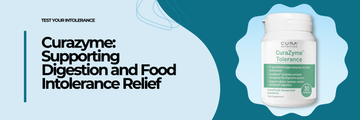Intro
A food intolerance test is a valuable tool for identifying potential food-related health issues, but preparation is important for accurate and reliable results. Whether you are using the at-home version or visiting a clinic, a few simple steps can enhance the quality of your test and ensure you are getting meaningful answers.
Before the Test
For the Essential Intolerance Test, you will need to provide a finger prick blood sample. To prepare effectively:
- Make sure to drink plenty of water the day before testing
- Warm your hands with a heat pack or warm water to improve blood flow
- Avoid heavy exercise or alcohol the night before
- Do not take anti-inflammatories or antihistamines for 48 hours prior, if medically safe to do so
Diet and Timing
You do not need to reintroduce foods you have previously removed. IgG antibodies remain in your system for weeks to months after exposure, so the test can still detect immune reactions even if the food is not currently in your diet.
After the Test
Once your sample is submitted, it will be analysed by a certified laboratory. You will receive a detailed report outlining your food intolerances, including severity ratings and recommended actions.
Research published in *World Journal of Gastroenterology* has shown that dietary interventions based on IgG testing can result in measurable improvements in gastrointestinal and systemic symptoms (Drisko et al., 2006).
What to Expect from Results
Your personalised results will typically identify your top food intolerances and help you prioritise changes without eliminating foods unnecessarily. The report will also help track progress if symptoms improve after dietary changes are made.
Conclusion
Preparation is straightforward, and the benefits of testing can be significant. By following simple guidelines before testing, you ensure the results reflect your current immune activity, helping you make informed and sustainable health decisions.










